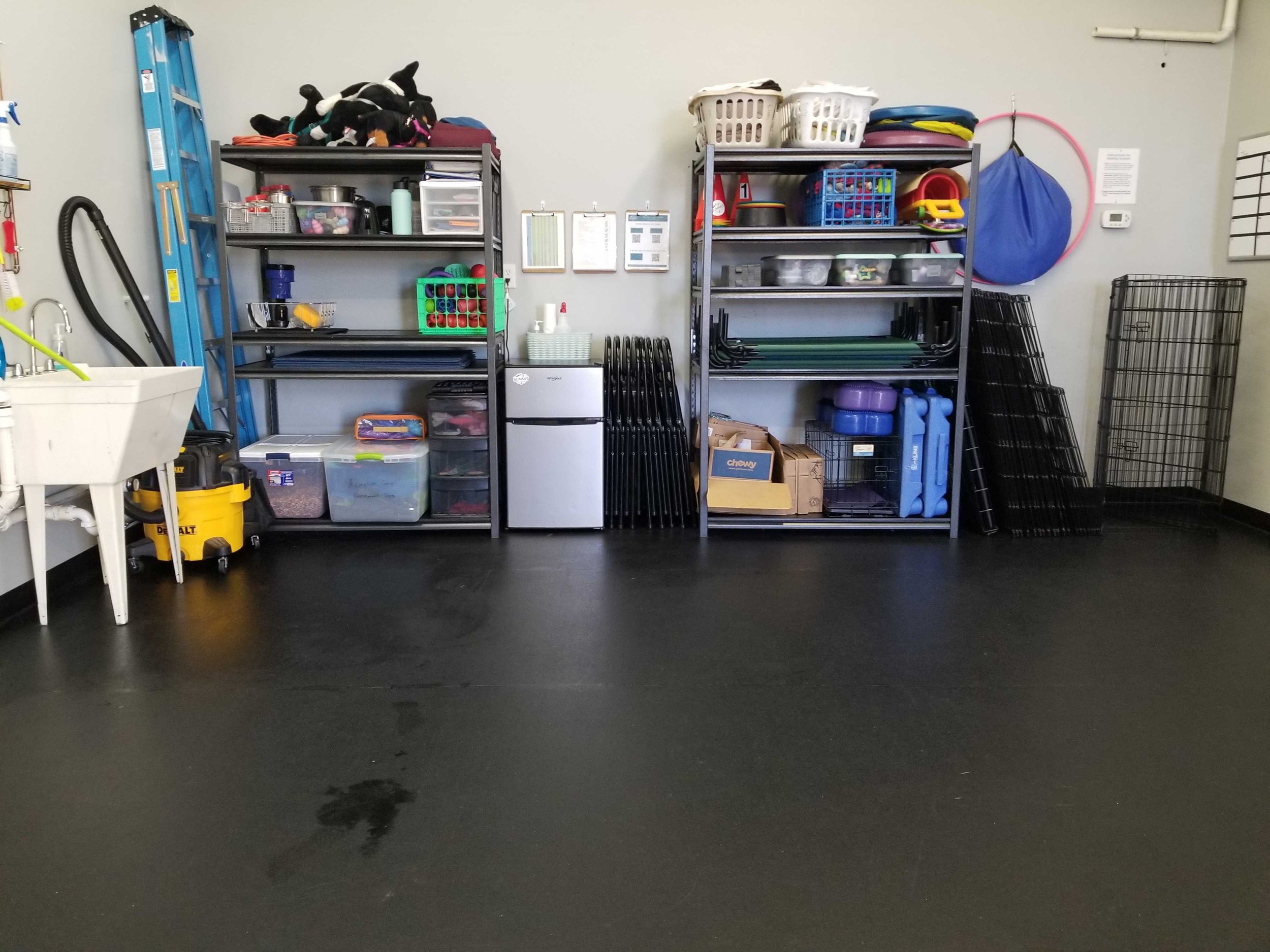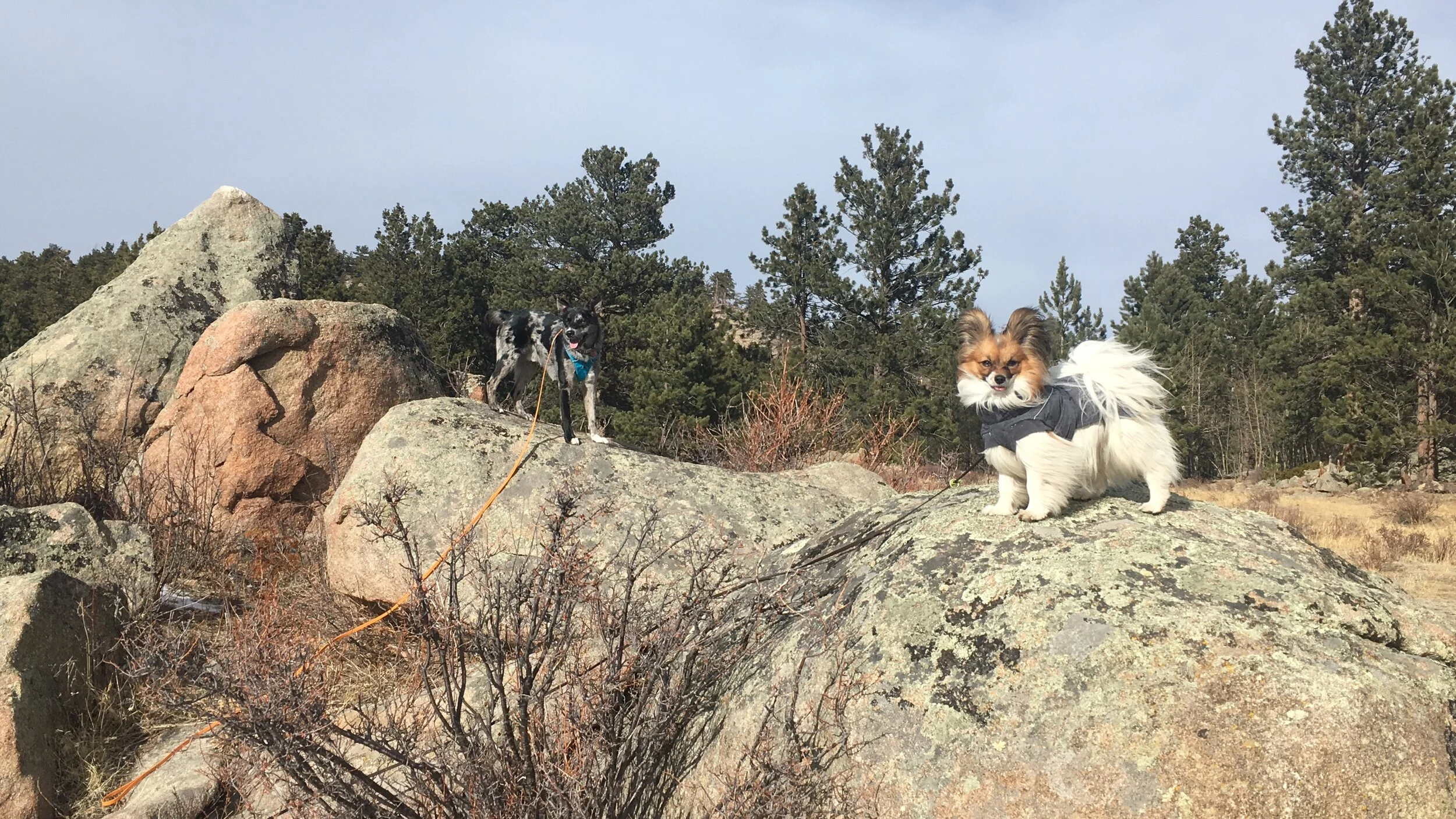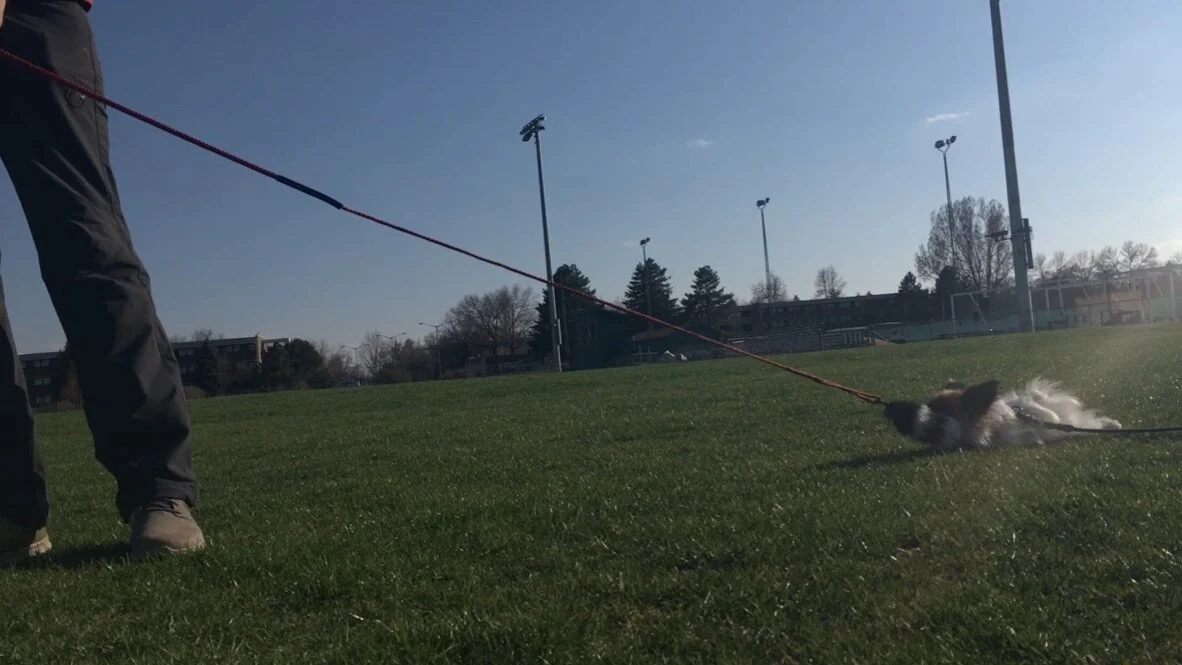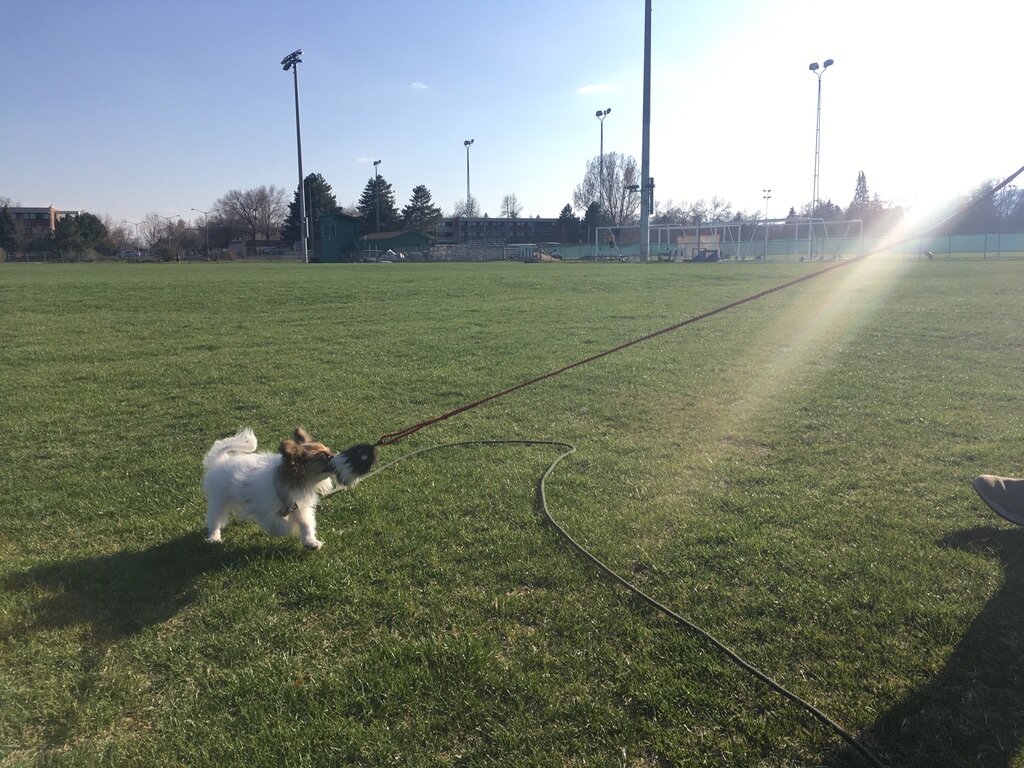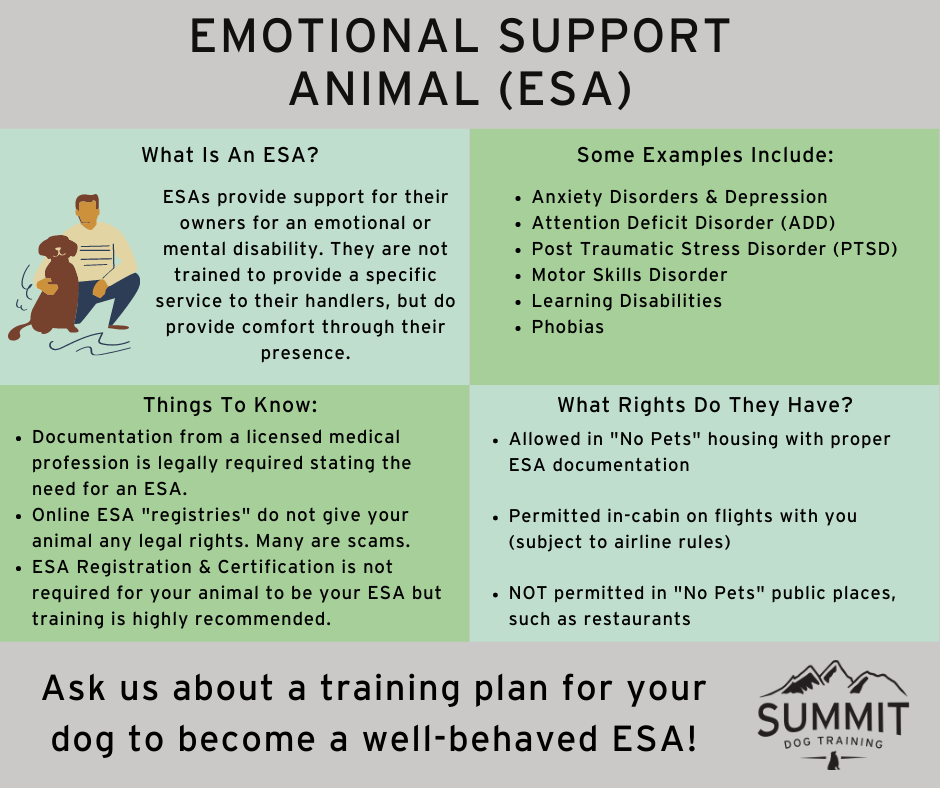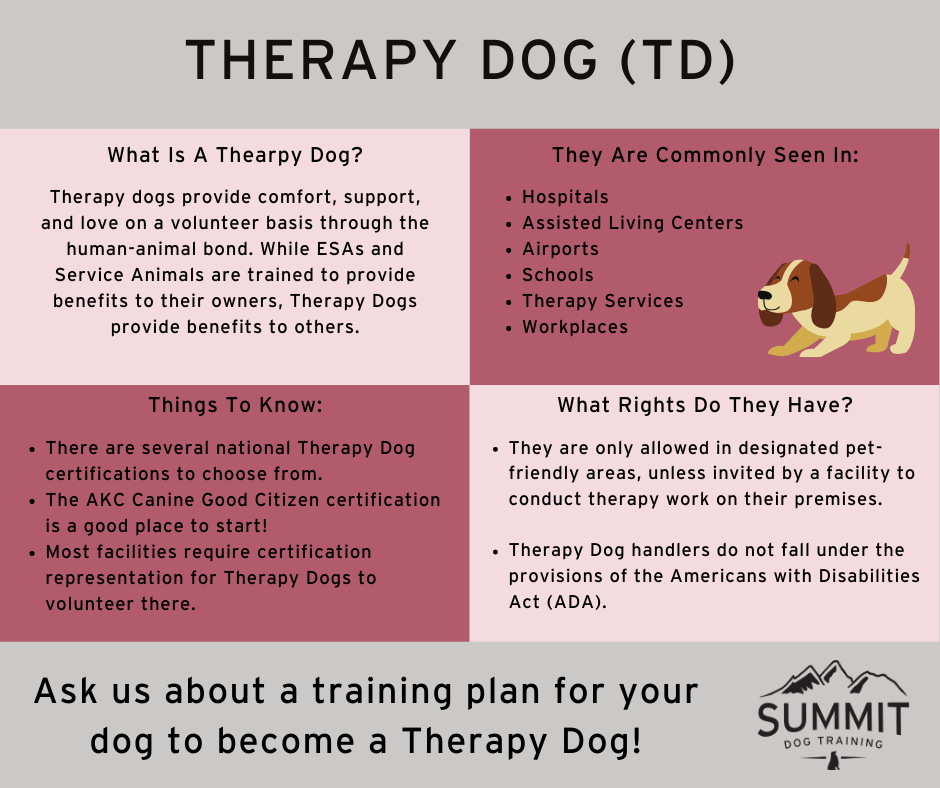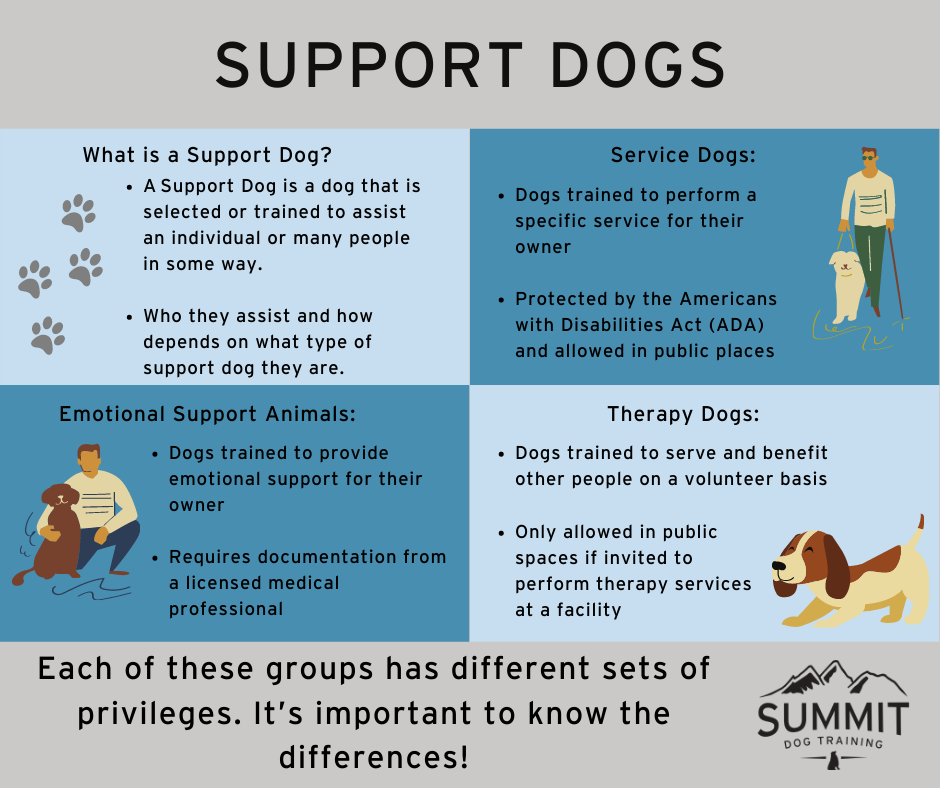By Benah Stiewing & Amber Quann
Barking and excitement at the door is a very normal canine behavior. This behavior usually stems from a combination of genetics (dogs of many breeds have historically been used as guardians) and the opportunity to rehearse this behavior quite a lot. It can be very rewarding for a dog to bark at something outside and see that trigger go away – even though the UPS man didn’t actually vacate the porch because the dog was barking. Below, you will find some helpful guidance for how we can support our dogs practice calmer, quieter front-door greetings! If your dog is showing signs of aggression or fear when new people enter your home, we recommend contacting us as soon as possible to begin private training, as this is a more complex issue that requires individualized attention.
To work on addressing reactivity or rude manners associated with front door greetings, we will approach this from three angles. We’ll start with each of these aspects individually, then we’ll string them together into a chain and work on them simultaneously.
Counter-Conditioning for the Door Cues
Managing Door Interactions for Safety & Success
Teaching an Alternative Door Behavior
Counter-Conditioning for the Door Cues
Counter-conditioning is pairing something good with the trigger repeatedly so that the dog learns positive feelings associated with hearing the previously scary or arousing sound (doorbell/knock/etc.). In a nutshell, counter-conditioning requires presenting the trigger sound in a mild form (i.e. you knock quietly on the wall in your house while your dog is right in front of you) followed immediately by something the dog enjoys (treat/toy/belly rub/etc.).
Keep in mind that even if the dog barks in response to the sound (as they usually do especially when we get to working on the doorbell sound), you are going to offer the pleasant response anyways. If we only waited for the dog not barking (which is a behavior that has been practiced a LOT at this point!), the dog would never get a pleasant response to the door sound and we would miss a lot of opportunities to pair good things with the sound that triggers the barking. So right now, as you are getting started on this process, offer a treat EVEN IF your dog first barks at the trigger sound.
Common Door Cues that we can Counter-Condition:
Car pulling into the driveway
Doorbell sound
Knocking
You rushing to the door
The visual of the person on the outside of the door
Managing Door Interactions for Safety & Success
The goal of management is to keep unwanted behavior patterns from being practiced. If you are in a rush, and can’t take the extra time to help your dog be successful at the front door, or that type of interaction is still harder than what your dog can handle, it would be better for your dog to be somewhere else in your house during the immediate door interaction. Think of a place your dog already feels comfortable. Ideally it should be near the door or the path to the front door so that it is convenient to send your dog to this area on your way to the front door.
Teach your dog that going into that designated space (a room, their crate, etc.) is a great thing! Toss a treat inside, have them spend time in that area with a kong or bone toy,and keep the duration short.
Once your dog is comfortable going in and out of that area, it’s time to add a verbal cue that tells them to run there to get rewarded.
Examples of words other students have used: “Emergency!” “Crate” “Let’s take a break” or “Get in Your Bunker!”.
Once you’ve picked a word, encourage your dog to follow you to the entrance of their area. Say your cue, then toss a treat into the space. Reward your dog again when they get into the area. Repeat, until your dog is quickly moving into the safe space when they hear that word.
Next, add the doorbell or knocking (or other door trigger) as an additional cue. When your dog first hears the sound, they might need to run to the front door in order to assess. That’s normal, especially after barking at the front door has been practiced for a while.
You can follow them to the front door, reward them for calm (like in our counter-conditioning work), and then encourage them to follow you to their area. Reward them heavily for going into their safe space, and keep the duration of that stay in the area very short. Repeat!
Teaching Better Alternative Door Behaviors
To shift an undesirable behavior, we first need to decide on a different behavior that we want instead. So how do we want our dog to react to the presence of a stranger at the door? Establish a routine that you and your dog can practice. Here is one alternative scenario that works well for door manners:
Doorbell rings. You and your dog go to the door together. Your dog sits or lies down on a rug placed in the foyer area a short distance from the door. You open the front door and greet the guest on the other side. Your dog stays on the rug until you give a release cue.
To teach your dog this routine, you first need to begin with counter-conditioning as described above. If your dog is so excited by the sound of a knock/doorbell that they are unable to think and work with us, we need to first use counter-conditioning to bring down their overall arousal level.
Once we have started to shift their emotional response to the sound of knocking, we can teach our dog to Settle on a Mat and Look at That, which will form the foundation of building the routine.
watch a video about how to teach your dog Look At That
watch a video about how to teach your dog to Settle on a Mat
watch a video about adding distraction & duration to your dog’s mat behavior
Front-door greeting is a complex behavior and it’s important that we approach it with the understanding that our dogs are simply following their natural instinct to react to a change in the environment. We cannot fundamentally change that our dogs will notice the change, but we can shift their emotional response and behavior pattern by using the above protocol. To really dive deeper into polite greetings in your home and out in the world, check out our class Nice to Meet You! - available as a self-study course or in-person as a group class in Fort Collins, CO. As always, don’t hesitate to reach out if you’re struggling with polite greetings - we are available for private in-person and online training to support you and your dog.
Summit Dog Training offers group dog training classes & private lessons in Fort Collins, Colorado, as well as online self-study courses & online private lessons for education on how to live the best life with your dog! If you are looking for more training support, please don’t hesitate to contact us! We’d love to help you and your dog get ready for any adventure.










